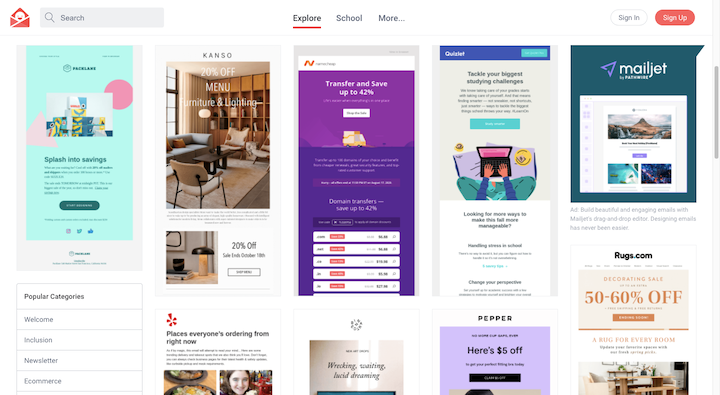The Ultimate Guide to Building a Powerful Website Design
The Ultimate Guide to Building a Powerful Website Design
Blog Article
The Ultimate Overview to Modern Website Layout Trends
In the ever-evolving electronic landscape, contemporary website layout patterns play a crucial role fit individual experience and engagement. From the rise of minimal style concepts that prioritize simplicity to the impact of bold typography in specifying brand identity, each aspect adds to a natural on the internet visibility. The focus on responsive and mobile-first techniques, alongside innovative microinteractions, additionally enhances usability. Additionally, the growing emphasis on lasting web layout practices shows a commitment to ecological obligation. These trends collectively raise vital inquiries regarding the future of reliable website design and what it suggests for customers and organizations alike.
Minimalist Style Concepts
Minimal design principles emphasize the concept that less is extra, supporting for simpleness and performance in visual interaction. This approach remove unneeded elements, focusing rather on crucial components that convey the intended message properly. By focusing on quality, minimal design enhances individual experience, allowing site visitors to browse web sites effortlessly.
Core tenets of minimalist design consist of the usage of adequate white area, which develops a feeling of equilibrium and company. This adverse room not just routes the viewer's attention to essential components but additionally fosters a soothing aesthetic atmosphere. In addition, a limited shade scheme is usually used, using soft hues or single plans to preserve aesthetic communication and protect against frustrating the individual.
Typography plays an important role in minimal layout, where readable fonts are selected for their simplicity and efficiency in connecting content. Photos and graphics are used sparingly, ensuring that they offer a purpose as opposed to distract from the overall message. Ultimately, minimalist design principles cultivate a concentrated atmosphere that urges individuals to involve with the web content, improving the general effectiveness of contemporary web site layout. This fad mirrors an expanding appreciation for thoughtful, user-centric aesthetics in digital areas.
Bold Typography Choices
Accepting vibrant typography selections has actually become a defining characteristic of modern website layout, as it effectively records attention and communicates solid messaging. Designers are significantly making use of typography not merely as a useful component yet as a key visual part that improves the overall visual and individual experience.

Moreover, the association of bold typography with minimalist design principles enables striking contrasts, boosting readability while preserving visual allure. The usage of whitespace around vibrant text additionally highlights its value, making sure that the message resonates with the target market.
As electronic landscapes end up being more competitive, leveraging vibrant typography makes it possible for brand names to differentiate themselves and leave a lasting perception. The mindful selection of typefaces and their application can evoke emotions, develop tone, and drive activity, making bold typography a crucial device in modern site layout. Inevitably, it is an effective method to enhance narration and make sure that key messages are not only seen but likewise other felt.
Receptive and Mobile-first Layout
Mobile-first and receptive design has emerged as a critical principle in modern web site development, reflecting the raising dependence on mobile phones for accessing on the internet web content. As customer behavior changes in the direction of mobile surfing, designers should focus on developing experiences that adjust effortlessly across numerous display dimensions and resolutions.
A responsive style ensures that a site immediately changes its design, images, and capability based on the tool being used. Mobile-first design supporters for establishing websites at first for smaller displays, ultimately scaling up to bigger display screens.
Carrying out mobile-first and receptive principles not only provides to user choices however likewise lines up with seo (SEARCH ENGINE OPTIMIZATION) practices. Major online search engine, like Google, focus on mobile-friendly sites in their rankings, making it necessary for companies to embrace these layout strategies. In an affordable digital landscape, embracing responsive and mobile-first style is not just a choice; it is essential for guaranteeing accessibility and involvement with a diverse target market.
Engaging Microinteractions
Microinteractions play an essential duty in improving individual involvement and total site experience, specifically in the context of mobile-first and responsive layout. These refined layout elements provide instant feedback to customers, making interactions a lot more satisfying and intuitive. Instances include switch computer animations, notification informs, and filling indicators, which not only guide users yet likewise create a sense of connection with the interface.
Including appealing microinteractions can substantially improve usability by lowering cognitive lots. When individuals obtain auditory or visual comments upon doing actions, such as clicking a switch or sending a form, they feel extra certain in their options. This fosters a smoother navigation experience, eventually raising user retention.

As website style patterns continue to advance, the relevance of microinteractions can not be overemphasized. They function as the refined yet powerful touchpoints that change common interactions right into phenomenal experiences, consequently raising the general efficiency of modern internet design.
Lasting Website Design Practices
Lasting website design methods are ending up being increasingly necessary as the digital landscape expands and environmental issues rise. Designers and designers are identifying their responsibility to develop web sites that not just serve user requirements however also reduce ecological impact. This technique encompasses a number why not try here of essential methods.
To start with, maximizing energy usage is paramount. Web sites ought to be developed to load rapidly and effectively, which lowers server energy use and enhances individual experience. Methods such as picture compression, decreasing HTTP requests, and making use of contemporary coding techniques contribute substantially to this objective.
Secondly, picking green organizing providers is critical - website design. Numerous hosting companies are currently powered by sustainable energy sources, enabling websites to operate in a much more lasting way. This selection mirrors a commitment to decreasing carbon impacts
Furthermore, adopting a minimalist layout can improve sustainability. Fewer elements on a web page cause much less data transfer, which not just accelerates filling times yet likewise conserves sources.
Lastly, advertising digital accessibility makes certain that internet sites reach a broader target market without unneeded bloat, straightening user experience with environmental obligation. By integrating these sustainable methods, web developers can add favorably to both individual involvement and the you can try these out planet's health.
Verdict
In recap, contemporary site design fads highlight the assimilation of minimalist principles, strong typography, and responsive design to improve individual experience. Engaging microinteractions add to unforgettable communications, while lasting techniques support for environmentally conscious advancement. Collectively, these elements not only boost aesthetic appeal however also enhance functionality, making sure that internet sites are both aesthetically striking and straightforward. Adopting these patterns is essential for creating impactful electronic experiences that resonate with customers in an increasingly affordable on-line landscape.
In the ever-evolving digital landscape, modern-day web site design fads play an essential role in shaping customer experience and involvement. By focusing on clarity, minimalist style enhances user experience, permitting visitors to navigate web sites easily.
Ultimately, minimal layout concepts grow a focused environment that encourages customers to involve with the content, enhancing the total effectiveness of contemporary site design.Microinteractions play a critical role in boosting customer involvement and general web site experience, especially in the context of receptive and mobile-first design.In summary, contemporary website layout patterns highlight the integration of minimal concepts, vibrant typography, and receptive style to improve customer experience.
Report this page